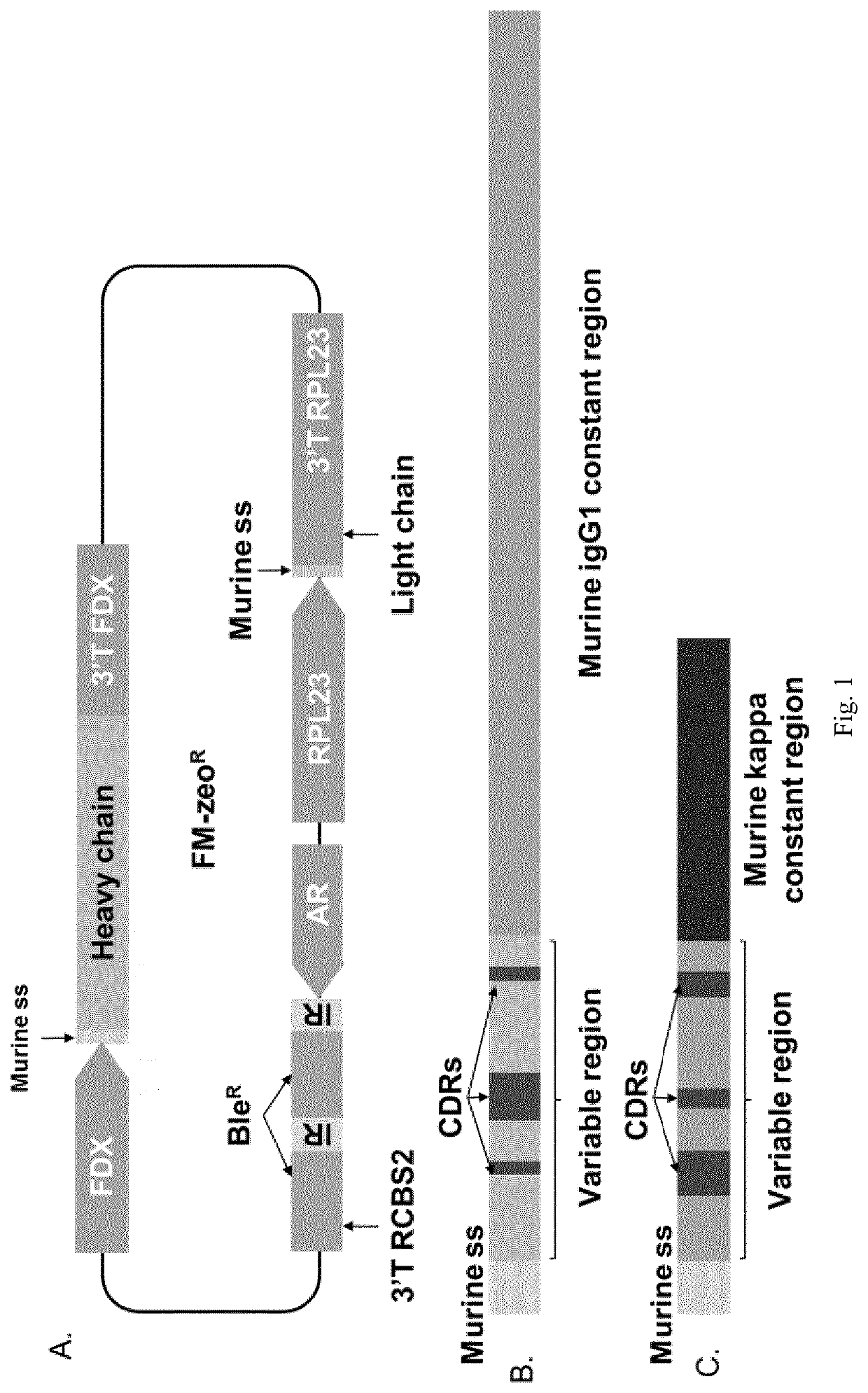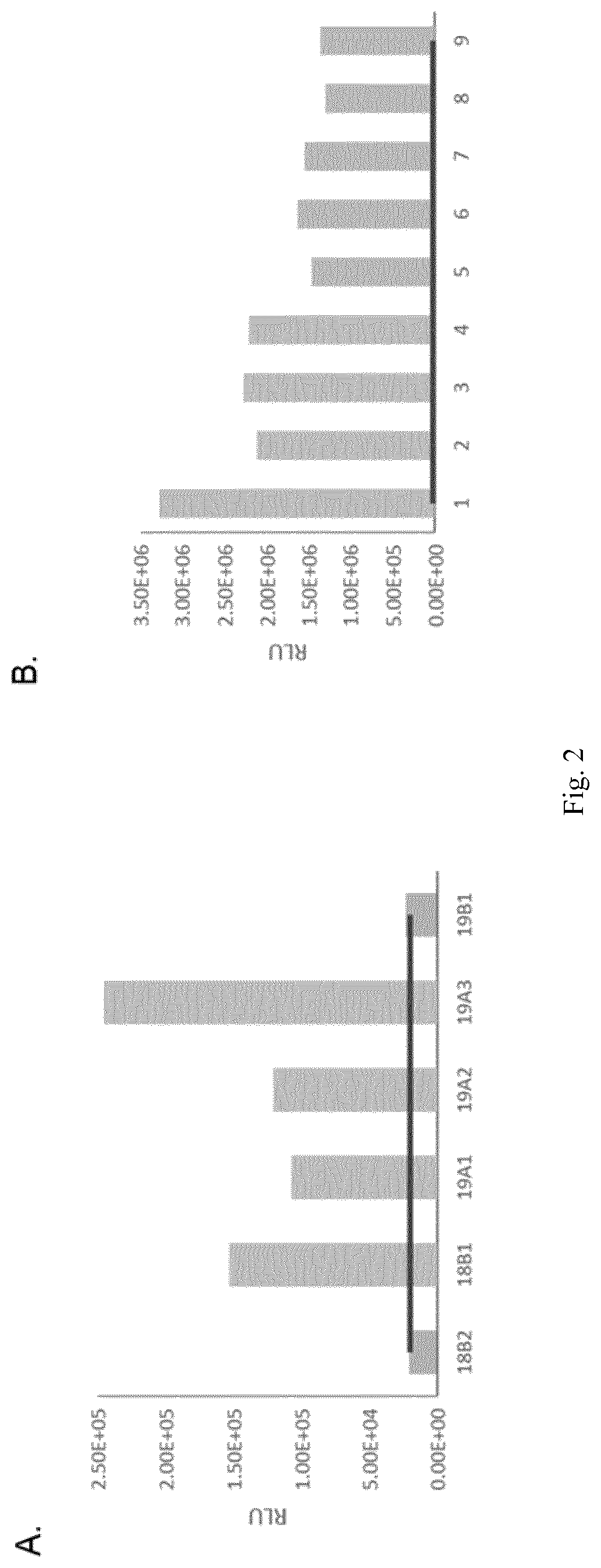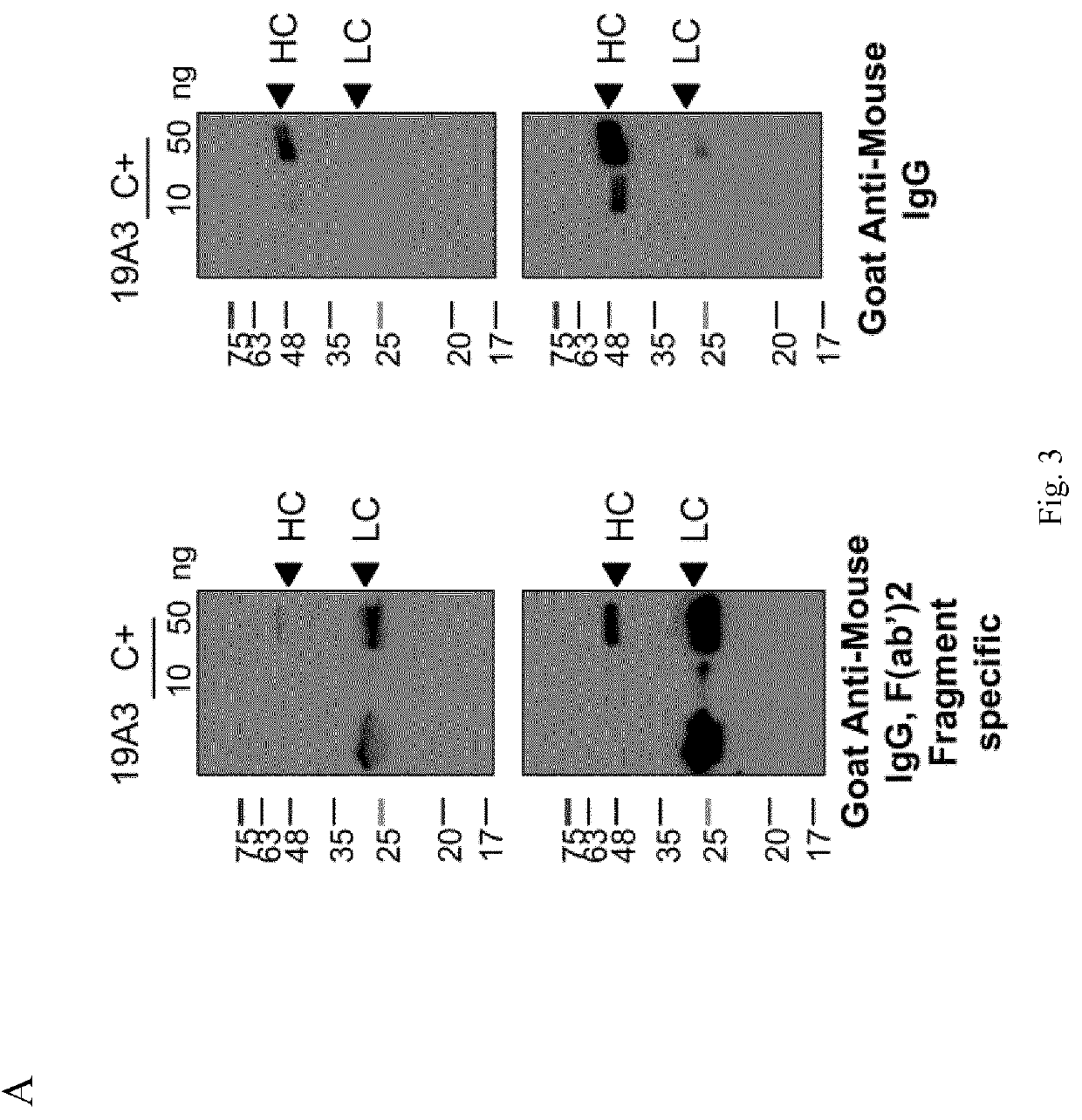Vector for co-expressing genes of interest
- Summary
- Abstract
- Description
- Claims
- Application Information
AI Technical Summary
Benefits of technology
Problems solved by technology
Method used
Image
Examples
example 1
nstruction
[0104]Expression strategy is based on the design of a single vector (FIG. 1) containing three cassettes: one for the expression of an antibiotic resistance for initial selection of transformants (BleR), one for the expression of the heavy chain (HC) and one for the expression of the light chain (LC). Because use of multiple copies of transgene arranged in tandem are associated with low transgene expression (Garrick et al. 1998 Nat Genet. 18(1):56-9) use of repetitive elements in one single vector, such as same cis regulatory elements to drive multiple gene expression, may also cause a decreased transgene expression. To increase probability of multiple high transgene expression three different cis regulatory regions (5′ and 3′) were included in a single vector to drive expression of a monoclonal antibody as an example of dimeric protein: HSP70A / RBCS2 (AR) promoter and 5′UTR RBCS2 (containing RBCS2 intron as previously described and 3′UTR RBCS2 to drive expression of bleomyc...
example 3 -
Example 3-Retransformation and Screening of Transformants
[0109]HC-paroR vector (FIG. 4) was transformed into 19A3 clone and 376 initial transformants (resistant to 25 μg / ml paromomycin) were analyzed by sandwich ELISA as reported previously. In this second ELISA, the median RLU value of all the initial transformants (that was similar to 19A3 signal) was taken as background. Clones that showed a 3-fold RLU signal above background were considered positives and were selected for further analysis (19A3#1 and 19A3#6) (FIG. 5). Quantification by Sandwich ELISA of mAb expression in both cells and clarified media revealed that in both transformants accumulation occurred mainly in the media (only 1% of total mAb was found in cell extracts) and therefore, clarified media was used in the following analysis. The standard curve included in the assay (m5c3 purified mAb) allowed the estimation of the mAb expressed (FIG. 6).
[0110]To evaluate expression of fully assembled mAb in the selected transfo...
examples 4-mab
Characterization in Selected Transformants
[0112]mAb expression in selected tranformants (19A3#1, 19A3#6 and UVM4#2) was monitored at different stages of growth. Quantification in samples (extracellular and intracellular) was done by sandwich ELISA, using a standard curve of purified mouse m5C3. Growth rate was monitored by OD750 nm and no significant differences were observed between transformed and wild type strains (FIG. 7).
PUM
| Property | Measurement | Unit |
|---|---|---|
| Electrical resistance | aaaaa | aaaaa |
Abstract
Description
Claims
Application Information
 Login to View More
Login to View More - R&D
- Intellectual Property
- Life Sciences
- Materials
- Tech Scout
- Unparalleled Data Quality
- Higher Quality Content
- 60% Fewer Hallucinations
Browse by: Latest US Patents, China's latest patents, Technical Efficacy Thesaurus, Application Domain, Technology Topic, Popular Technical Reports.
© 2025 PatSnap. All rights reserved.Legal|Privacy policy|Modern Slavery Act Transparency Statement|Sitemap|About US| Contact US: help@patsnap.com



